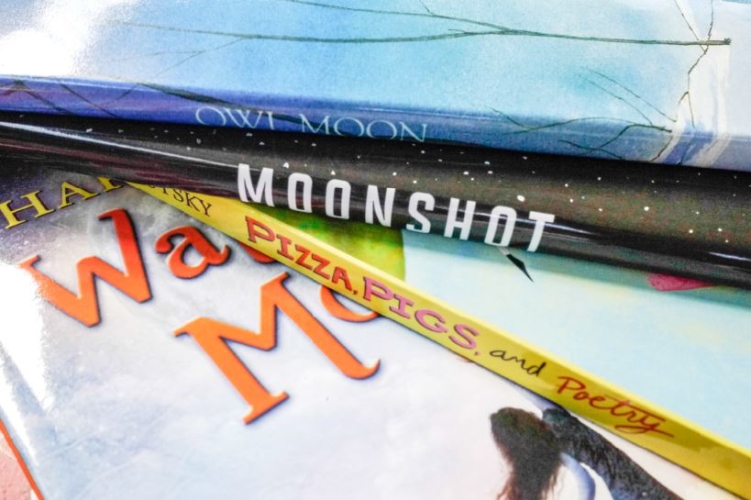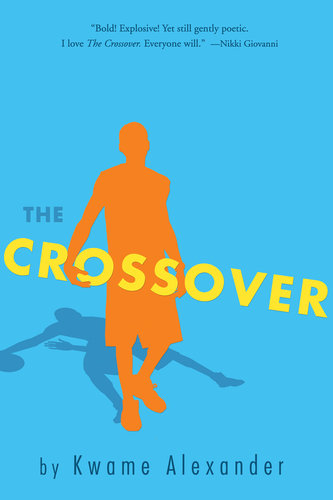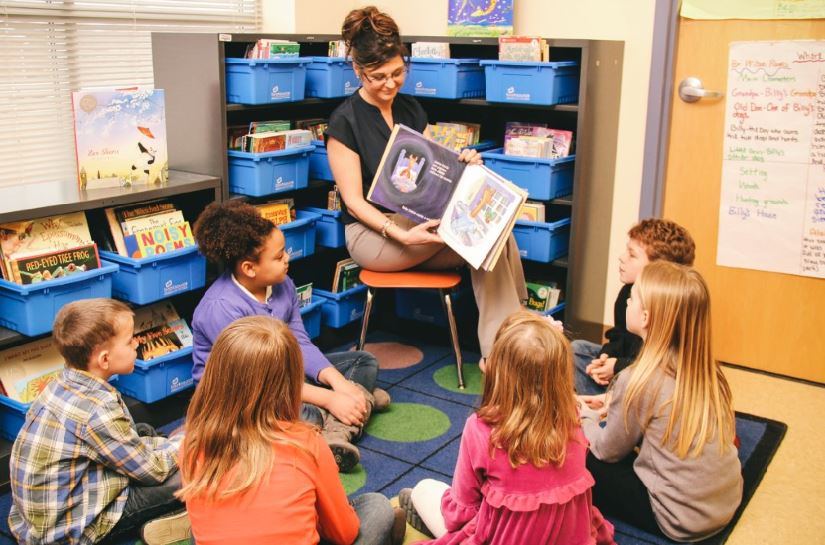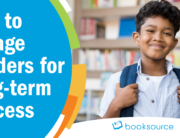If you ask adults about being read to as a child, the recollections conjured will vary greatly. Some may recall cozying up on a loved one’s lap and being whisked away on the adventure of a lifetime. For others, memories involve being cramped in an uncomfortable desk while a teacher or classmate reads a passage they have read and reread, resisting the temptation to skip ahead and anxiously awaiting the moment they can finally turn the page!
We have a mission at Booksource to engage readers, and as educators and book lovers we have the awesome responsibility of bringing incredible stories to life for young readers each and every day through read alouds.
Reading out loud to students of all ages has so many benefits, and, when done correctly and responsibly, students at any level will, by and large, enjoy themselves. Below are the top reasons to read out loud to students in your classroom every day. Yes, every single day of the school year—even the half days! And upper-grade teachers, this list is for you, too!
1. Read Alouds Improve Listening Skills
One study shows that reading and listening levels often don’t catch up to each other until late middle school. So, while your students might be, on average, reading on a second-grade level, their listening might still be on a kindergarten level. Speaking and listening skills are crucial to everyone’s development as productive citizens, and reading out loud is a terrific way to hone those audio skills and practice respectful listening habits.
Think about the last faculty meeting or professional development session you attended. I am willing to bet there were at least a few suspects in the room guilty of poor listening habits, whether they were talking to a neighbor while someone else had the floor, checking their device(s) during the presentation or just plain blanking out and missing a key point or directive. We have all been there, and we each have room for improvement. Life skills such as good listening habits must be practiced early and often through the duration of academic tenure.
2. Read Alouds Bridge a Big Old Gap
Reading aloud to students makes higher-level books accessible. As educators we are equipped with heightened senses that allow us to discern when our students are lost, confused or require more information or further explanation to understand. Reading out loud gifts us with the perfect vantage point to observe when the class, or even a select few, could use some guidance.
When reading out loud to a class, you have the opportunity to bridge the gap between their current level and the level of the book, introduce new concepts within the scaffolding of a story, share pictures to expand knowledge and develop vocabulary skills. Imagine the young minds you will be molding as you model for students how you use pictures and context clues to figure out the meaning of an unfamiliar word!
3. Read Alouds Model Reading Skills
Speaking of modeling … reading out loud to students is the perfect time to model fluency, pacing and expression—the literal way you read! Go ahead—bring out your best character voices. Be brooding, chipper or mousey. Make animal noises. “WHOOOOOSH!” with the wind! Make your read aloud a one-person theater act.
Story-telling originated as a means of entertainment, and in this day and age of technology, there are some things that should never change. A good old-fashioned dramatic read aloud is a classic that should be held dear! It’s OK to smile before Christmas, show your class some of your fetching personality, and share with them a silly and light-hearted side! In turn, you will inspire a special bond with your students; they will learn how to be a better reader just by being in the presence of your reading, and you may just encourage the bravery and gumption they need to grow their own speaking and read-aloud skills!
4. Read Alouds Model Comprehension Strategies
Get yourself a runway because you are making a career of modeling! When you read aloud to your class, you get to model comprehension strategies in an effective and non-threatening way. Show them how you question, look back to recall a helpful fact (pages don’t just turn in one direction with a no-looking-back policy!) and get the class involved in a fun fortune-telling predicting session. Reflect on key ideas midway through the story, summarize together and compare and contrast different themes the students took away based on their personal histories. Talk them through how to make individual, text-to-text and text-to-world connections and share them to expand everyone’s knowledge. You never know what you will all learn from each other—just like book pages, the flow of knowledge isn’t just one direction, from us to them.
5. Read Alouds Are Good For Comprehension Strategy Modeling (yes, again!)
This is accomplished so effectively when reading aloud to a class that it deserves multiple spaces on our list! Infer the meaning behind elusive and implied text. Relish in visualizing and discuss the value of the author’s word choice to convey images. Discuss the illustrator and whether he or she created the images held in everyone’s minds—or find out if the students had completely different ideas of the visuals reflected in the terminology. Make a cross-curricular connection to art and have students create their own illustrations as you read out loud before sharing the “professional’s” visual take on the story. Then ask which images your students prefer and why? The possibilities are endless and don’t require full-blown, intense, time-consuming lesson planning.
6. Read Alouds Get Students out of Their Reading Rut
We are all creatures of habit. It happens to the best of us. We like mysteries, true crime, humor, poetry, graphic novels, short stories, historical fiction, sci-fi, dystopian fantasy, folklore picture books, nonfiction content area books and biographies. There are so many genres to choose from, but many students find what they like and stick with it, never giving other types of literature a chance.  Reading out loud to your class will expose them to more genres and make them accessible, relatable and, dare I say, enjoyable.
Reading out loud to your class will expose them to more genres and make them accessible, relatable and, dare I say, enjoyable.
Your students might think that “poetry” means either dark, grim and heavy, or its contrast: flowery, sweet, roses, reds, violets and blues. Your middle-grade boys might not realize The Crossover (Grades 4-7) by Kwame Alexander even exists—let alone that they might actually enjoy it! Reading passages out loud will allow them the opportunity to expand their reading repertoire.
7. Read Alouds Give Them a Break
All of this modeling leads to another benefit of reading aloud to your class—it’s a brain break! The truth of the matter is that you don’t become a professional educator without unconsciously modeling comprehension strategies on some level each and every time you pick up a book. Go ahead and try. It is inherent. The class will learn skills from your example just by observing your interactions with the text. If they have the opportunity to relax and enjoy a story, they will soak up the benefits of your modeling without having to be more than an attentive listener.
And that leads to my final reason …
8. Read Alouds Are Fun!
Last, but never, EVER least, having an engaging, relatable, fantastic story read to you is a key opportunity for pure fun, something that should never be lacking over the course of a long, hardworking day at school. Enough said.
Here is my challenge to you for this new school year: dig deep and try out some original character voices on your next read aloud. And remember to relax and have fun!








Read aloud is the best method for teaching and practicing reading to improve reading skills for readers